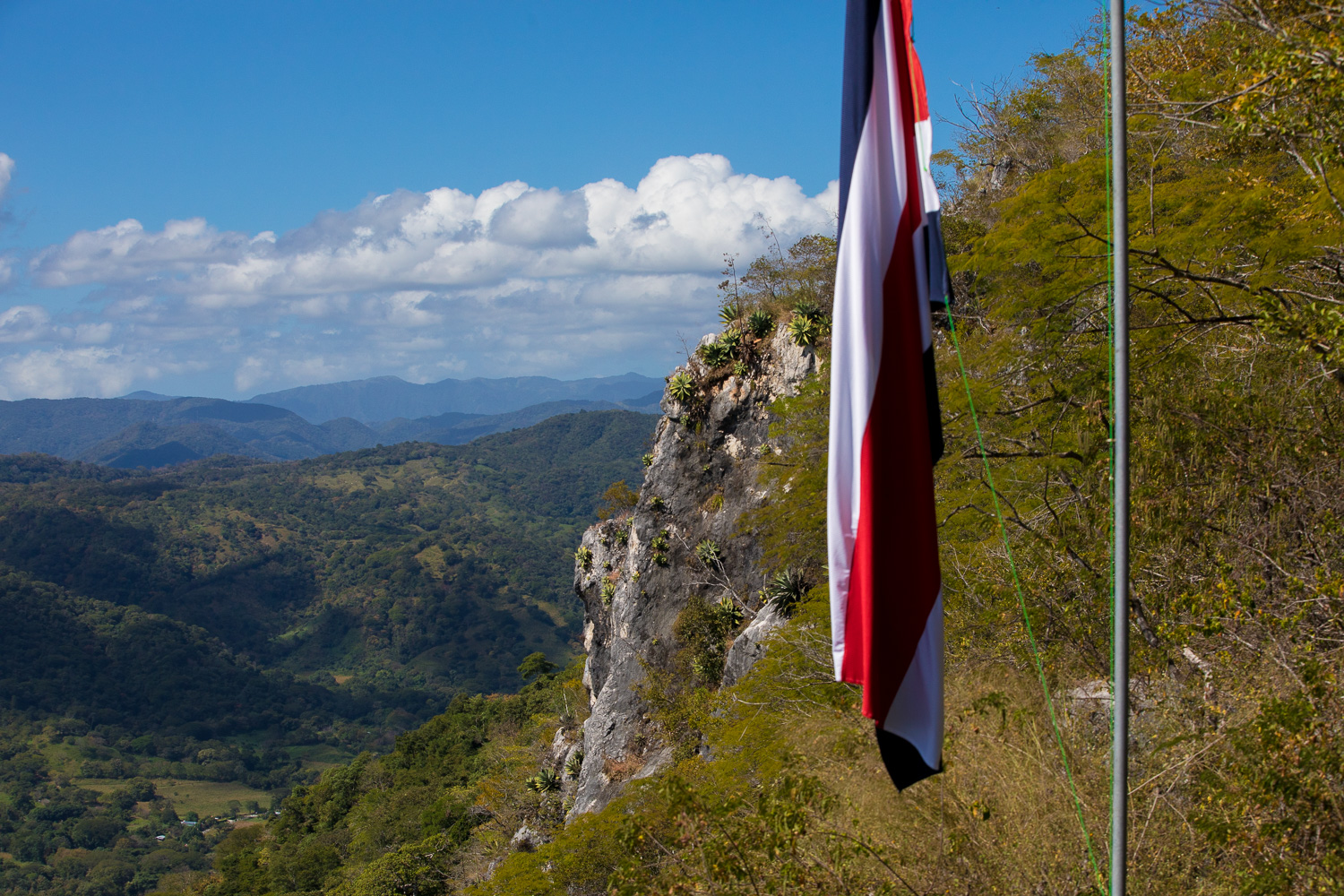“They say it was me, but no, it wasn’t me,” says Dorian Méndez, administrator of Barra Honda National Park. “I made a proposal. That proposal is a vision; we all make the mission happen.”
Dorian is talking about a change in the national park’s relationship with the communities that surround it—especially Barra Honda, Santa Ana, and Del Flor de Nicoya, Guanacaste.
Other participants in this change do mention Dorian as one of the catalysts, but they also include another: the COVID-19 pandemic.
“What made this possible is basically the pandemic,” says Karina Poveda, Manager in Solutions Development at EARTH University (UEARTH), which has supported a business training process in these communities since the second half of 2020. “I think that facing a critical situation moved people to think differently, out of the box.”
“There are many townspeople who think that the national park has to give them things. There are many people who have sheltered themselves in the pobrecitico, ‘poor little me’“, says Yenys Baltodano Díaz, president of the Association of Environmental Guides of the PNBH and originally from Santa Ana. “Many people who had their businesses had never seen the park as a muscle for development. Then the pandemic happens and we realize that without the national park, no one is coming. So the hotels, restaurants, grocery stores, everything was dead.
“Either we come together to get ahead or we all go bankrupt,” adds Yenys.
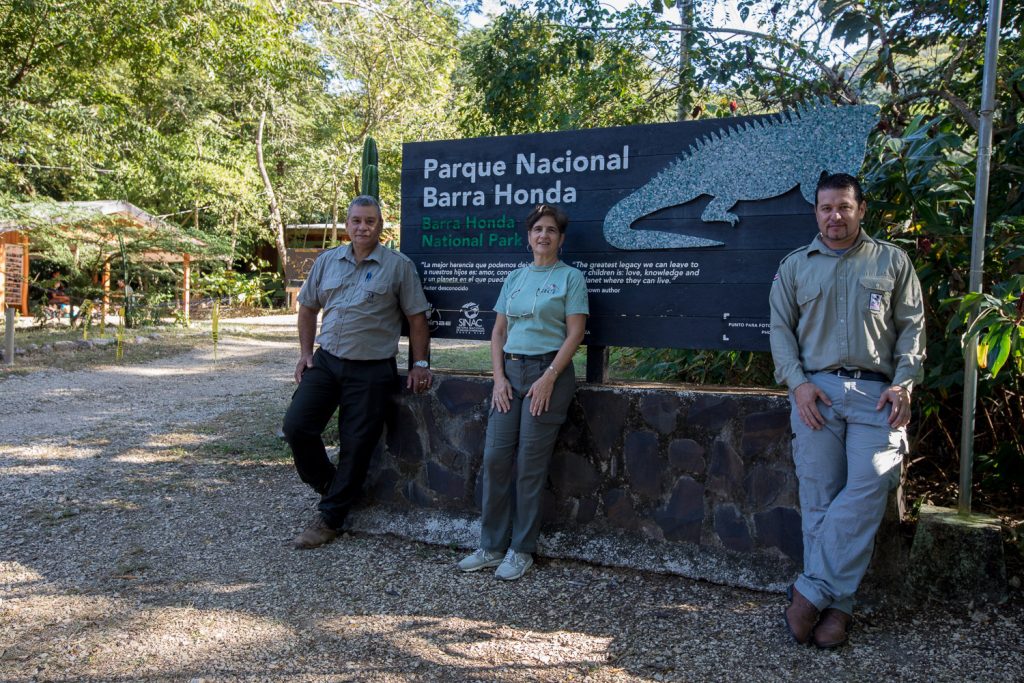
An indifferent past—and present
Barra Honda National Park was created in 1974 to protect the calcareous formations within this mountain, which stands at 423 meters above sea level. It rises from the savannah of the canton of Nicoya, a lonely figure above the plains. It is the only protected area in this canton, which is internationally known for being one of the world’s five blue zones. These are areas where people are 10 times more likely to reach the age of 100 than in the rest of the world.
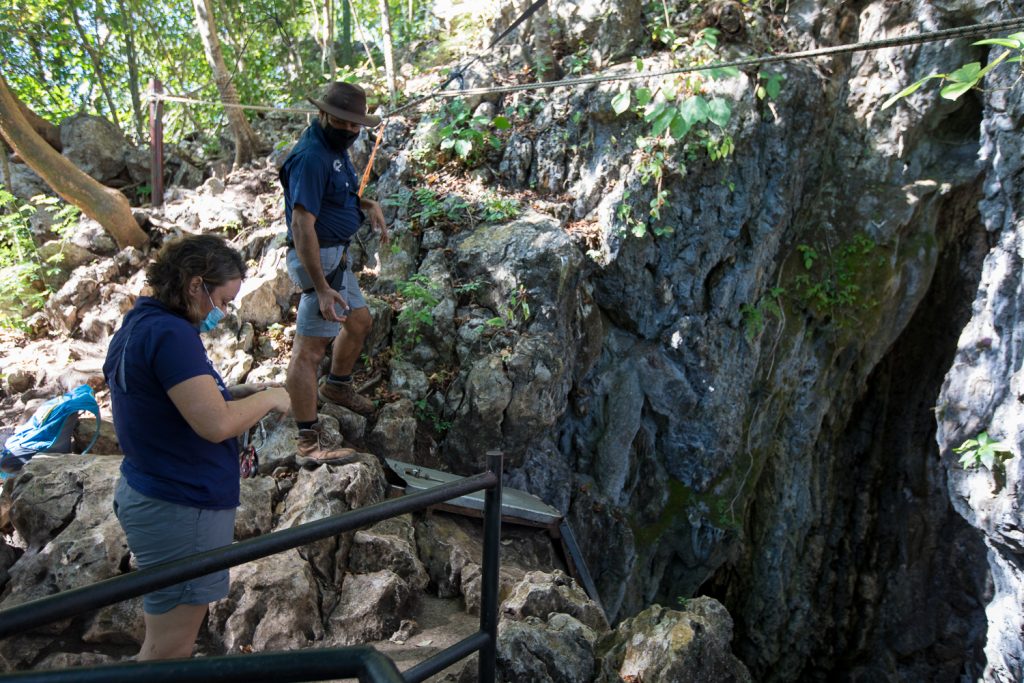
However, despite being a unique protected area, it is one of Costa Rica’s least visited national parks. According to the SINAC report in 2019-2020 numbers, in 2019, Barra Honda National Park received 5,691 visitors, 0.27% of the total visitation of all the national parks in Costa Rica. In 2020 it received 2,718, which represented 0.26% of the total. In both years, 70% of the visitors were Costa Ricans and residents.
“When we were in school, our excursions were to go to the park,” says Digna Hernandez Jiménez, who at 65 has returned to her hometown of Del Flor to manage Villa Nico and Anita, a family-run lodging business built on her parents’ property. “We would go on horseback… the most we did was climb up a little bit, and they told us that there were caves, and we imagined them. They showed us the noise that the earth produces, and we brought food, and that was it.”
Digna has six sisters and a brother. They all studied and worked outside their community, and although they constantly returned to visit their parents, it is not until now that they are all retired that they have returned to invest and live seasonally in the area.
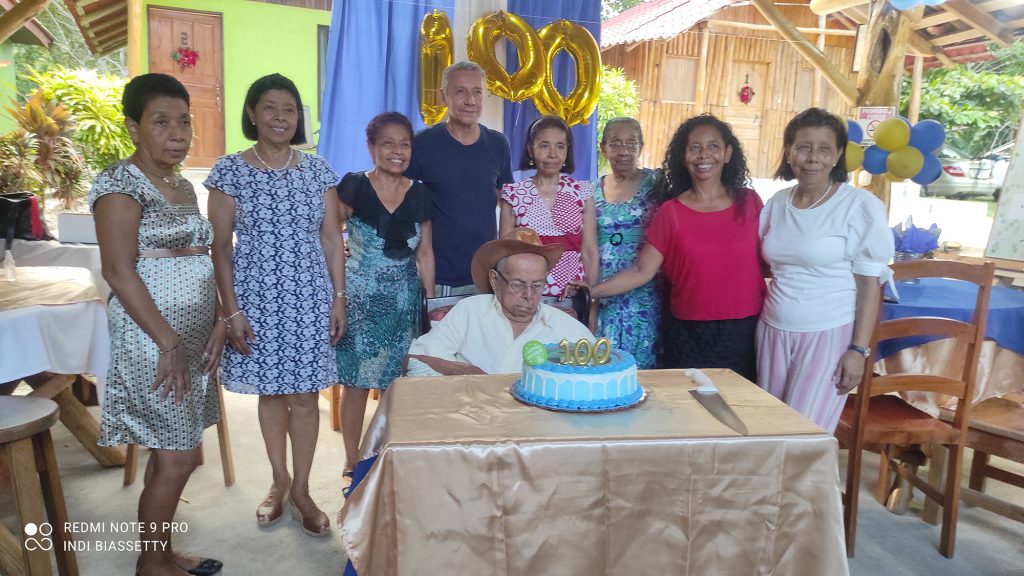

Shirley Enriquez Enriquez, 57, is originally from the town of Santa Ana and is also an entrepreneurin the area. She is co-owner with her husband, Max Enriquez Guevara, and the star cook of the Piso Tierra Bar and Restaurant, where she offers traditional dishes from Guanacaste.
“I haven’t been there. I’ve only seen things on television and in photos,” says Shirley, referring to the protected area that has its main entrance 3.5 km from her home and business. “My children and grandchildren do go there. I don’t feel like it.”
That is the reality of this protected area and the communities that surround it. The people who live and work near Barra Honda feel very little connection to the park, even though they depend indirectly on tourism. This was clear in an assessment included in the Barra Honda National Park 2014-2024 General Management Plan. In that assessment, a 2012 survey of 20% of the families that live in the six communities surrounding the park—Del Flor , Santa Ana, Corralillo, Caballito, Quebrada Honda and Barra Honda—showed that “the majority of the population is aware of the existence of the Park, and they have also visited a protected area. However, there is no direct link with it or with the officials of the Park”.
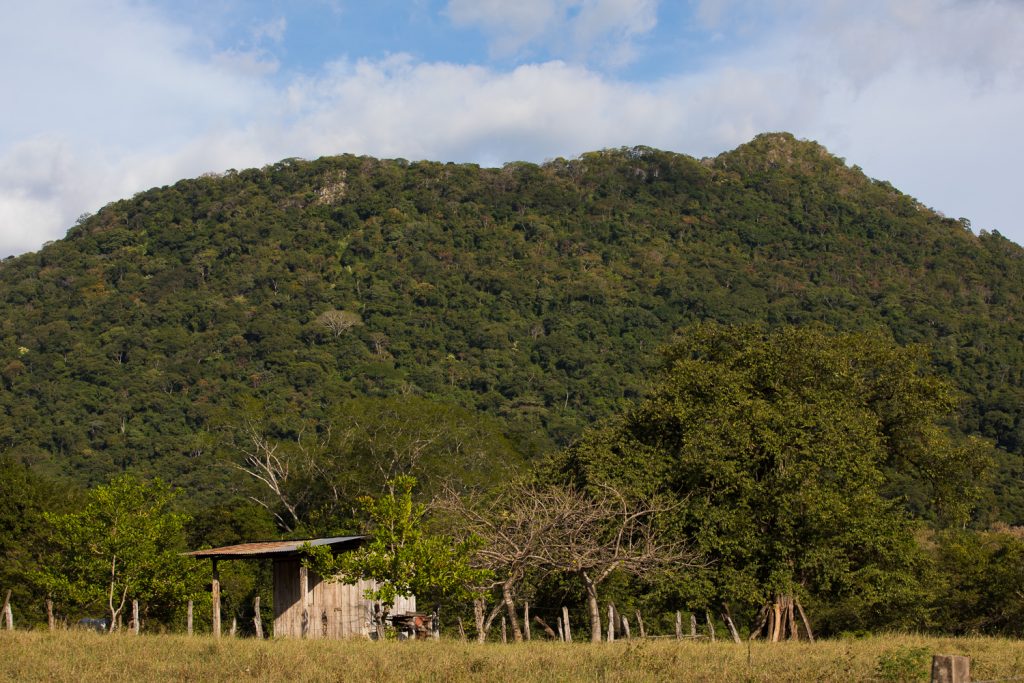
“That is a bitter claim that Dorian makes,” says Sergio Cantillo Malavasi, originally from Tres Ríos de Cartago, and the administrator of La Casita Posada Rural in Santa Ana. “People do not integrate into the park even though the park invites them—only those of us who have a clear interest. But the regular resident who works in Nicoya, or who has his little house around here, cannot see a reason to integrate.”
“That is the mountain you have to climb,” says Sergio.
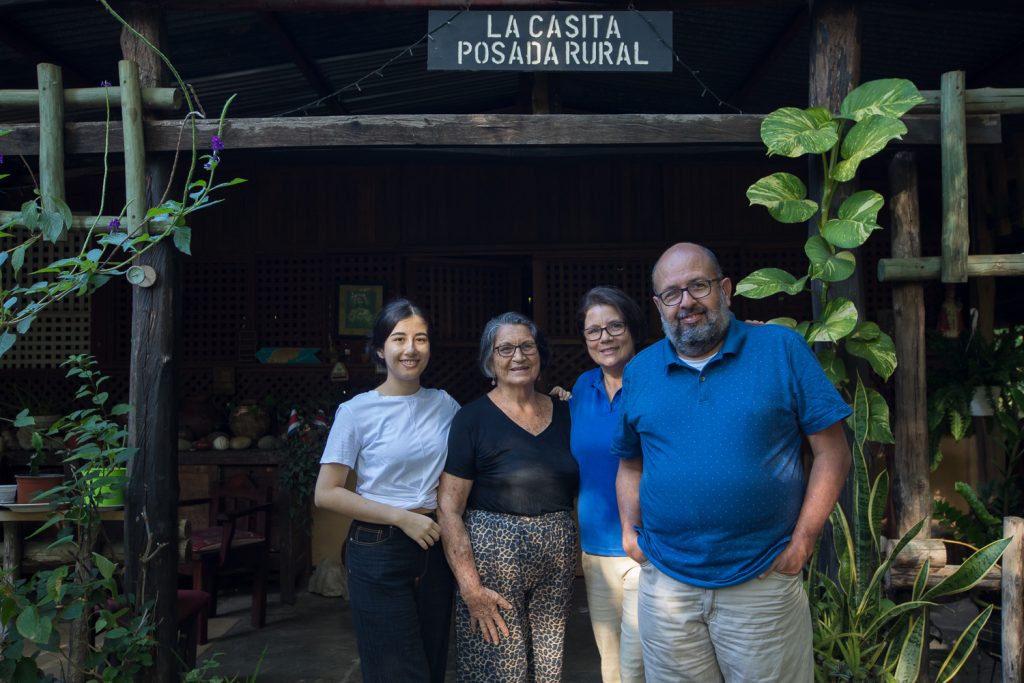
Creating a destination, not just an attraction
“People call us and ask us how close the beach is, if they can get there on foot,” says Sergio about the Costa Rican tourists who contact them. “When we tell them that this is a mountain, interest dies out.”
La Casita Posada Rural was founded by Sergio’s in-laws, Luis Guillermo Campos and Estela Agüero, who 34 years ago decided to leave Tres Ríos de Cartago to live in the countryside. Without planning it, and in a very spontaneous way, the house became a lodging and restaurant, since the visitors of the PN Barra Honda arrived in the area and needed services. For many years, the inn only served clients directly referred by French travel agencies, but little by little they began to receive more clients. During the last year, they have seen marked improvement.
According to Sergio, because the pandemic required social distancing and avoiding crowds, Barra Honda said “Voilá, here we are.” As a place that was generally overlooked and difficult to access, it became a destination for Costa Ricans eager for a safe getaway. As of December 9, 2021, the park has received 4,600 visitors, 83% of them nationals and residents—nearly twice the 2020 figure.
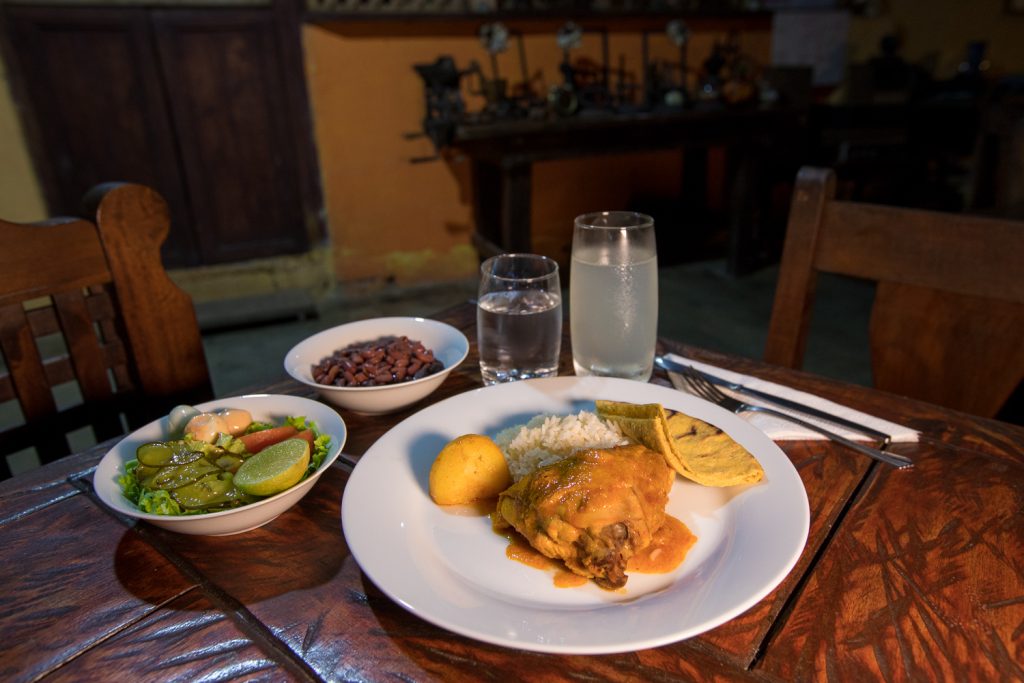
But before that could happen, the leadership of the national park—through its officials, such as Dorian, its administrator, and Xinia Campos, the person in charge of Environmental Education— had to raise the park’s profile in a major way.
Dorian had already been theorizing about the park’s potential in the final project for his Master in Sustainable Community Development degree at the National University (UNA), where he sketched out a program to promote the creation of tourism ventures and chains around the national park. However, when he saw the entire community paralyzed by the sanitary closures caused by the pandemic, he had to accelerate this process and put his ideas into practice.
He led a process through which the park approached all the known enterprises in the area, including the guides’ association, and brought two more actors onto the scene: EARTH University and its EARTH Futures project, and the Costa Rica por Siempre (Forever Costa Rica) Association.
Starting in the second semester of 2020, UEARTH has provided training on administrative and human business topics, starting with the association of guides and continuing with the local enterprises that decided to participate.

“The first thing we started was resource mapping, a tourist inventory,” says Karina, who is in charge of this project for UEARTH. The resource map allowed entrepreneurs to realize all that they can offer as a destination. “Definitely something that is very common for them, like having coffee with tortilla and curd, is something that has value for more authentic tourism.”
Today, because of this exercise, a dozen small businesses are working together so that the visitor can find much more than a cave in this destination. These range from Felina Matarrita Gómez, who teaches a tortilla workshop and sells traditional Guanacastecan products made from corn, to the recently formed Nama Tours, a local tour operator.
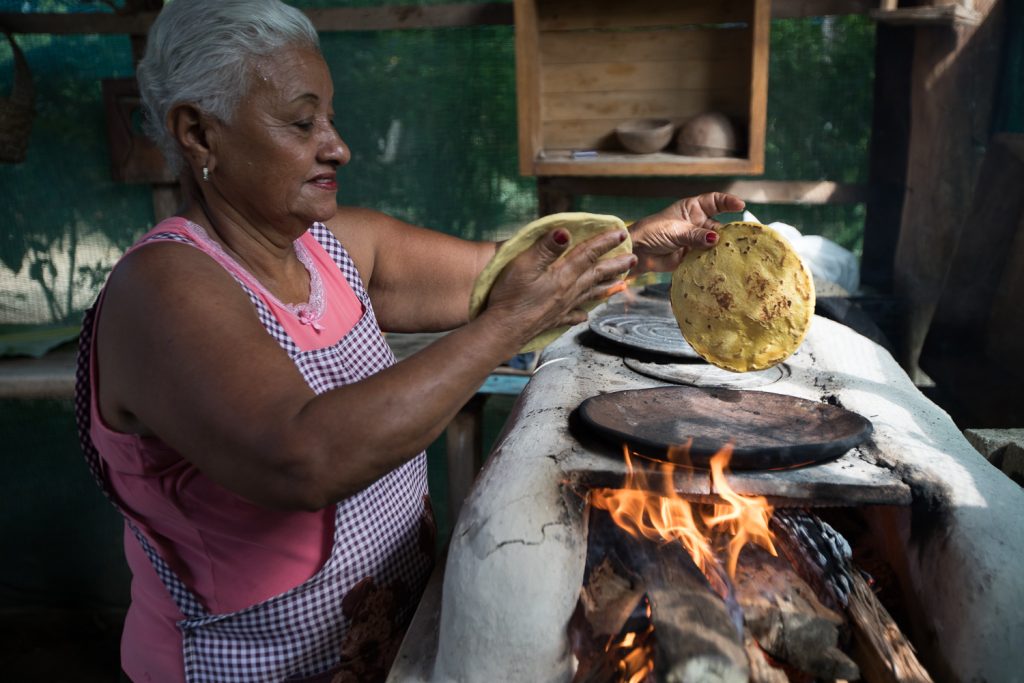
The Forever Costa Rica Association also contributed to this process.
In November 2020, a project that took six years to get off the ground was finally inaugurated: 200 meters of boardwalks on the path that leads to the Nacaome viewpoint, one of the main attractions of this protected area. These elevated walkways not only protect important rock formations, but also make the route more accessible.
In January 2021, the CRx10 2021 Challenge began. Through this challenge, Forever Costa Rica challenges Costa Ricans to visit at least five of 10 protected areas chosen in different parts of the country, within their social bubbles. If they meet a set of contest requirements, they win a monetary award. One of those 10 protected areas was the PN Barra Honda.
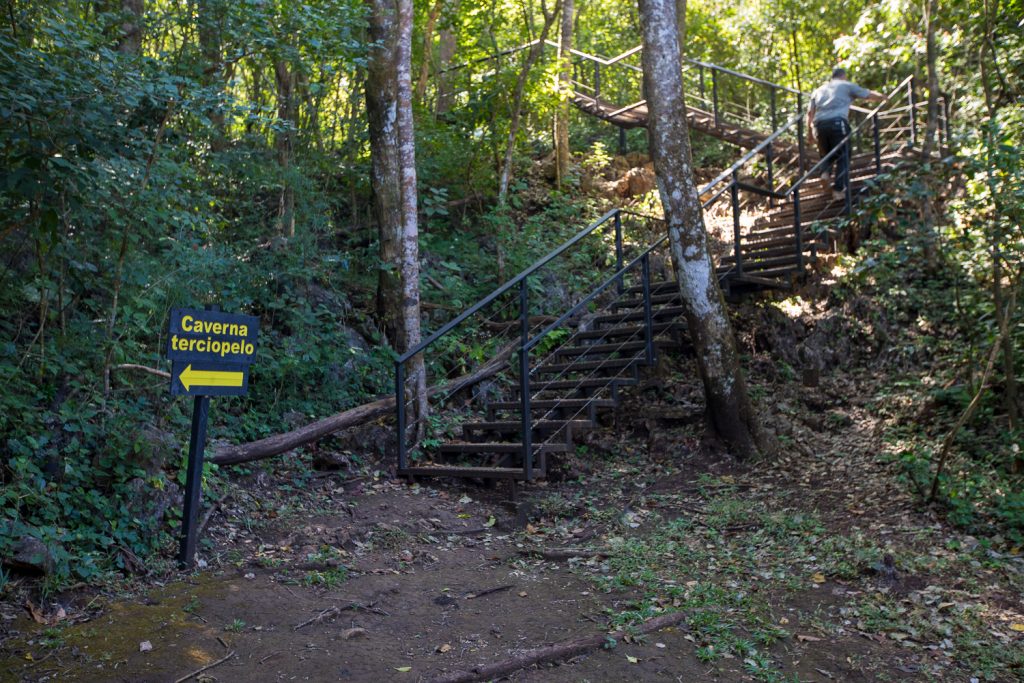
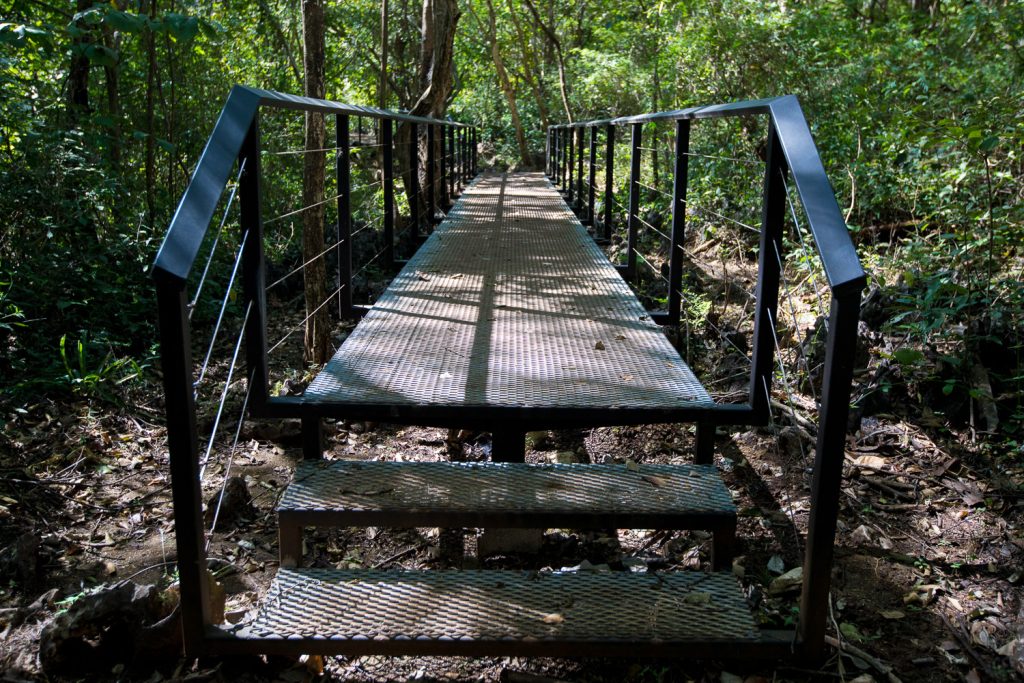
“That was the biggest success this place has experienced in a long time,” says Sergio, who saw his wife, Ileana Campos Agüero, prepare many lunches for visitors. “In the worst of the pandemic, we had visits and visits and visits. Word of mouth about the park began to spread.”
Shirley, from the Piso Tierra Bar and Restaurant, like the family that runs La Casita, has seen many years of the history of PN Barra Honda. Her business started as a coyolera, or palm-wine facility, to serve her neighbors, but nowadays she is in high demand for the meals she prepares. In the last few months of the pandemic, Shirley has seen plenty of changes.
“People come more often,” she says. “Probably it’s because before there wasn’t very much here, and the park is more visible. They have made a lot of improvements, and it looks very nice. There have been more clients after these improvements.”
For the Hernandez Jiménez family, from Villas Nico and Anita, the experience has been different because they only began operating as a formal lodging in September 2019.
“Until February 2020 it was going well,” says Digna, the family’s fifth daughter.
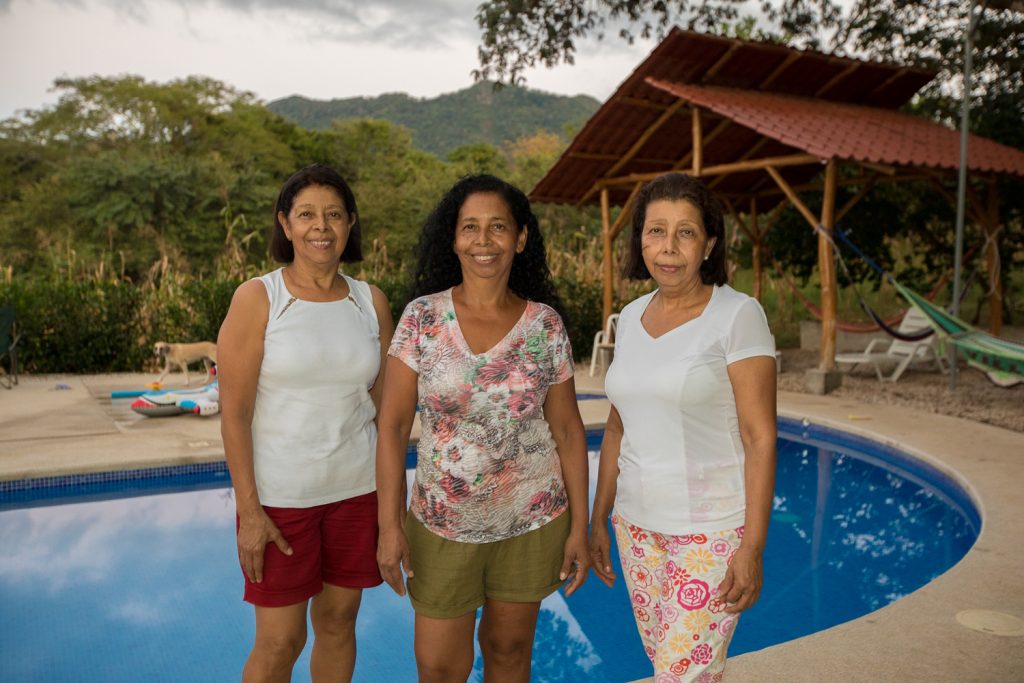
But “over the past year and a half, the relationship between us, as Nico and Anita, [and PN Barra Honda], has become stronger… Don Dorian has been very concerned about supporting the entrepreneurs of the community, and we have become more integrated. Right now there is harmony at all levels, not only in communicating but also in helping us and providing us with information on how to attract tourists, which is our reason for being. It’s our way to be linked together as a whole. They include us in all the activities that they have as a national park.”
Digna says her family’s goal is to grow so that they can employ more people from the community. At the moment, all the siblings and their spouses are managing and serving clients.
“We’re not 15 years old anymore, but we’re giving it everything we’ve got,” she says. “We want the company to be robust enough to open jobs for the residents of the community who earn 6,000 colones (about $9.50) for a day’s work. We would like to help them.”
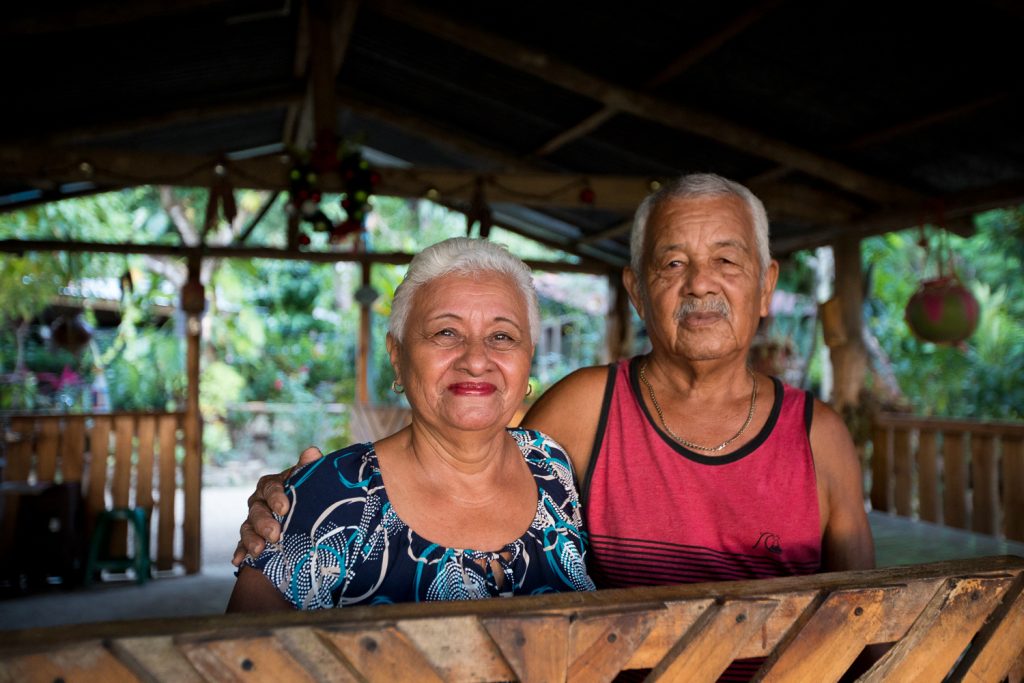
What’s next for this very young symbiosis?
“Barra Honda is a super interesting laboratory,” says Leonardo García, Program Officer for the Forever Costa Rica Association. “Positive attracts positive”, he adds, referring to the fact that, little by little, the correct actions—from transparent leadership that generates trust in the park’s administration, to the support received from external entities—have begun to change the relations of the protected area with the community.
“It depends a lot on that social fabric, on people having a strong bond with the protected area,” says Leonardo. “The new conservation paradigms dictate that conservation has to be done with the communities.”
“There is a future as long as people want to continue,” adds Karina from UEARTH. She also brings up a series of significant problems that need to be addressed: for example, that these communities have no or very basic access to telecommunications.
“How are you going to develop as a tour operator if you don’t have internet? How are you going to develop hosting sites if you can’t even open the booking because you don’t have internet?” she asks.

Sergio, from La Casita, says that it wasn’t until 2020 that the community managed to get SUTEL to install a communication tower that provides the community with a mega-cellular connectivity. This was all because the mayor of Nicoya was unable to make a call during an official visit to the park: “Six months later we had the tower.”
The condition of the roads is another challenge that Karina brings to light: “Right now the dust is something that has a big impact, especially on food projects.”
For Sergio, achieving changes in the areas mentioned by Karina could improve the relationship between the communities and the park.
“We have to generate a visible effect so that the community has more faith in the project: for example, having a decent road,” says Sergio. “This is the only national park in the Nicoya canton. How can it be that you can’t arrive by car? You have to come with a four-wheel drive, or at 5 km per hour, because otherwise you will kill yourself in one of those potholes.”
“People do not feel that the park is their own, or that it is useful,” says Sergio. “They say ‘How do I benefit because the park is there?'”
“What is lacking is for people to believe it,” says Andrea Carvajal Cordero, one of the four women who make up the seven-member guide association. Andrea—along with her husband, Yow Cárdenas Navarro, also a member of the association—has begun to diversify her tourism offerings by building a cabin called Eleanor Estancia. As part of the economic value chain, visitors can hire the food preparation services of a neighbor.

For Dorian, the road traveled is long and productive. He points out that seven enterprises that are now being trained, and are directly benefiting from the management work carried out by park officials. Behind them are many indirect beneficiaries in the community. The entrepreneurs who are being trained have boosted sales of local products such as corn and beans.
“We had a tremendous problem in waste management. We organized and called the municipality,” says Dorian of another achievement. “Now we have a monthly garbage collection campaign. Before, people burned garbage.”
He also points out that the relationship with the guides association has grown stronger, to the point that the association has provided fuel for the maintenance of the park in the face of budget cuts suffered by all of Costa Rica’s protected areas.
In addition, part of the income from tourism in 2021 has been placed in a fund within the Foundation for the Balance between Conservation and Development (FUNDECODES). The fund, which has already reached 4 million colones (more than $6,250), will be used to grant microcredits to young people and women in the community so that they can continue studying, or start or improve a business.
“What we are doing is a social investment. It grows a lot of fruits,” says Dorian.
But the road is still long, and the symbiosis needs more members of the community for its impact to be broad and permanent.
For Karina, continuity will depend on whether “the people who are linked can sustain their emotion, or external entities like us continue to join forces to facilitate or create opportunities for them to continue in the consolidation process.”



